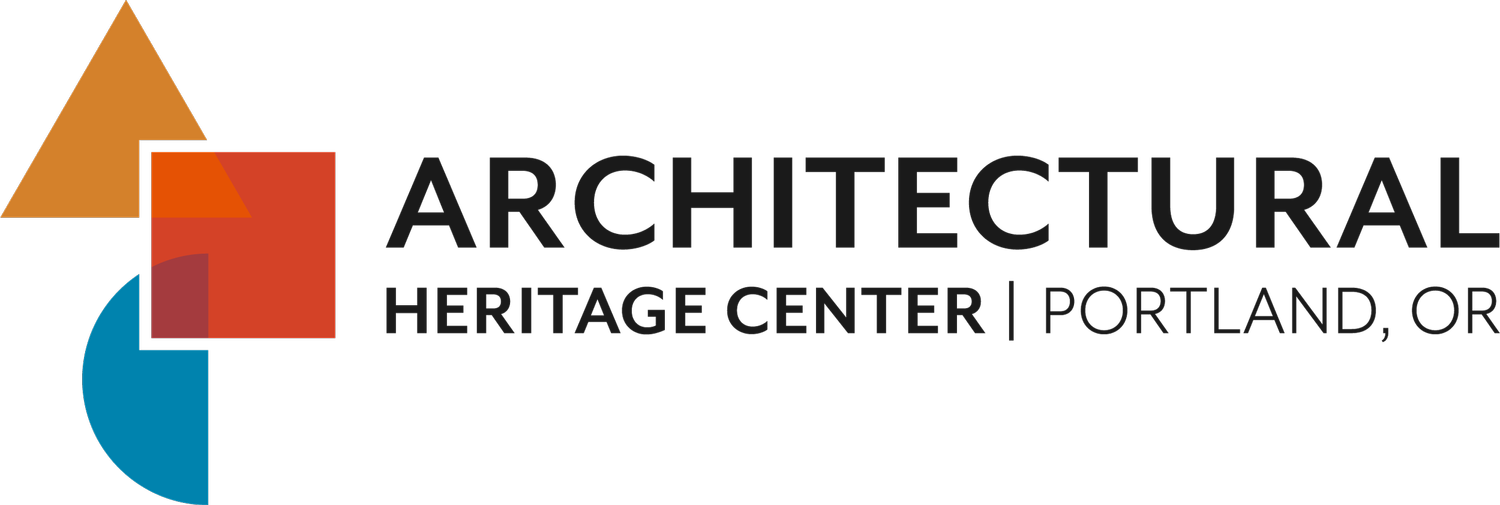2024 ARCHITECTURAL HERITAGE CENTER CANDIDATE SURVEY RESPONSES
Sharon Nasset Candidate for Mayor
LIVABILITY: Stewardship of Portland’s built environment is a key quality of life issue. The preservation and reuse of existing buildings is an important component of sustainable development and helps to maintain strong, livable communities.
Q1
Agree: I totally agree.
ADAPTIVE REUSE: Do you think the conversion of empty or underused commercial buildings (e.g., offices or warehouses) into new uses can advance two important objectives:
a. alleviate Portland’s affordable housing shortage;
b. help to revitalize the city’s downtown.
Q2
Agree: Yes. However, the zoning needs to stay commercial and not residential. Loud noise at all hours, light, and smell will still be part of the lifestyle of the property.
SUSTAINABILITY & CLIMATE: Building reuse, instead of demolition and replacement, equates to taking thousands of cars off the road (EcoNorthwest Study). Promoting reuse should be an important component of achieving Portland’s sustainability goals.
Q3
Agree: I totally agree with keeping current buildings and maintaining their beauty. I think that having a variety of housing options at all income levels in a downtown keeps it vibrant.
FINANCIAL INCENTIVES: To make building conversion and reuse economically feasible, many believe we need better financial tools, such as a state rehabilitation tax credit – a tool used by 39 other states. Would you support making that a priority on the City’s legislative agenda?
Q4
Yes: I believe that the current housing money we have received needs to be put into expanding our current housing stock and fully utilizing it before building large building projects. I do not believe in changing zoning from commercial. There are some funds available for commercial and retail, too.
DEVELOPMENT IMPACTS: We need more affordable housing. However, proposed zoning changes (e.g.significant increases to building height and scale) can incentivize demolition, displacement, gentrification, and erasure of cultural heritage. How concerned are you about these potential negative consequences?
Q5
Very concerned: I am interested in fully utilizing our residential properties by providing housing opportunities to extended families, boarding, and rooming houses by adding dormers, bedrooms, bathrooms, and other upgrades. Our homes are not bulldozer-bait and I do not agree with changing zoning to add density. Large projects can totally change a neighborhood, use tax abatement and remove funding for vital services and remove money from our economy.
PLANNING KNOWLEDGE: How familiar are you with Portland’s Comprehensive Plan, zoning codes, land use regulations, and current policies for historic properties?
Q6
Somewhat familiar: I have owned a house since 1988, I was a real estate sales associate and broker for 15 years, and have been involved in land use and transportation issues for decades as a citizen advocate.
INFILL DEVELOPMENT: In Portland’s historic areas, it’s important that new infill construction fit with surrounding context and retain the districts’ unique qualities and identity.
Q7
Agree: Yes. The houses on NE 7th, 9th, 11th, that are recent to the neighborhood are great and homes put in a decade ago look just like the homes that have stood there for over 100 years.
CONSERVATION OF PORTLAND “MAIN STREETS”: Portland’s unique identity is due in large part to its many distinct and diverse neighborhoods and “streetcar-era main streets.” Many were the original main street when these areas were separate cities before being annexed into the larger City of Portland. Recent rezoning, increased height limits and no historic protections make these areas vulnerable to demolition. Would you support the creation of mini-Conservation Districts (typically 1 or more blocks) to help retain these iconic commercial main street centers?
(For Reference: Conservation Districts have greater flexibility than Historic Districts given that they still allow for growth and change but can support more context-sensitive development. New Conservation Districts would have demolition review for contributing resources, objective design standards, and the height limit of the zone).
Q8
Yes: I tried very hard to keep the "theater district" Musicbox, Orphum, Fox, and Off Broadway. People came downtown to watch a movie and have dinner. Instead, they killed the district to put up a Nordstroms. I do not believe we should remove buildings that are not seismically updated, as long as they are structurally safe they should be allowed to be used.
TOURISM: Historic buildings and public spaces are a significant economic asset as a major attraction for tourism. What priority should this be given when planning and setting policy?
Q9
High: Yes, the crowns of our building are unique and gorgeous. Several areas of town have excellent buildings showcasing talent in construction. The Southeast from the river to 39th has a large area of Victorian homes and duplexes many built by individuals that added a little something. Block after block of these homes are worth touring; I would love to see a project where people allowed their homes to be brightly painted as the "Painted Ladies" once were and historic gardens and tea rooms.
Q10
BONUS: Tell us your favorite building, neighborhood, or place in Portland.
RESPONSE: That is hard, I love them all. Inner NE has the oldest homes, Laurelhurst has big houses, the large homes on the westside with the views, and St. Johns' is a real town.





